Theo Verelst Local Diary Page 91
I've ditched the usual header for the
moment, I think it doesn't help much anyhow.
This page is copyrighted by me, and may be read and transferred by any
means only as a whole and including the references to me. I
guess that's normal, the writer can chose that of course, maybe
Ill make some creative commons stuff one day, of course I have
made Free and Open Source software and even hardware designs available!
This
page is under condstruction, seo check backr later,a too.
Mar 9, 20:59, 2010
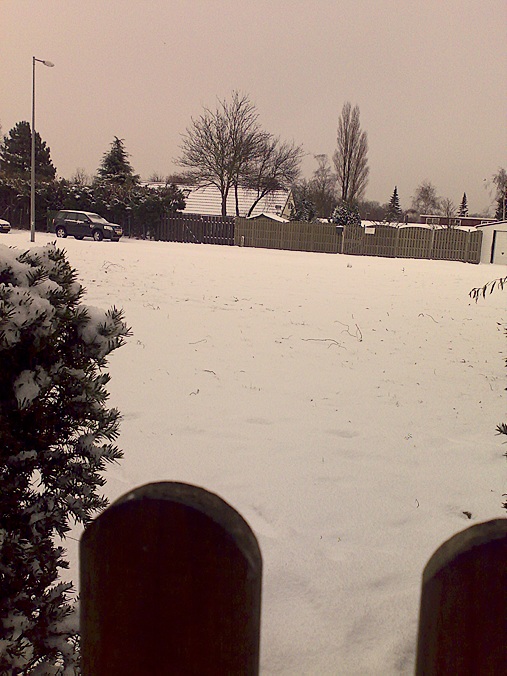
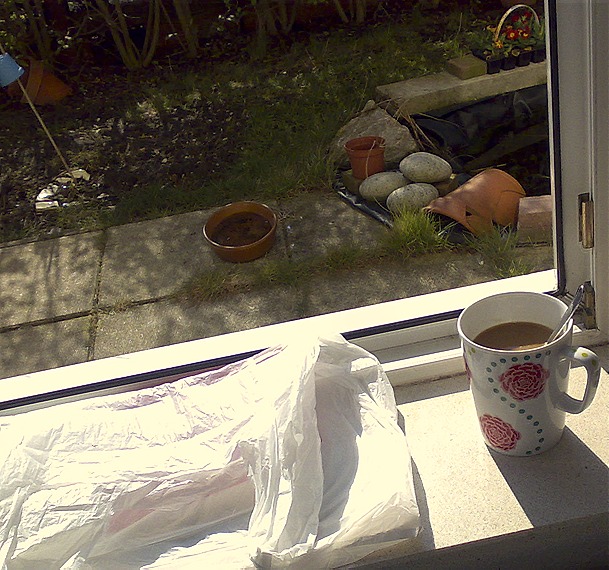
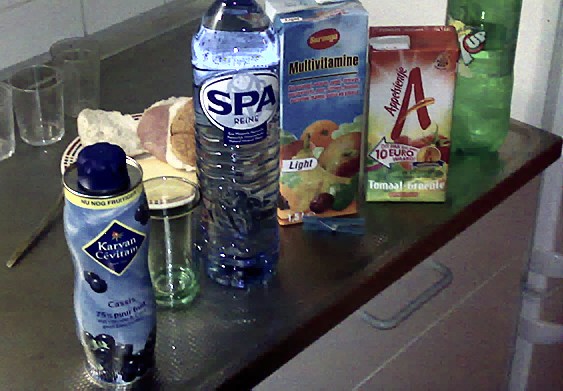
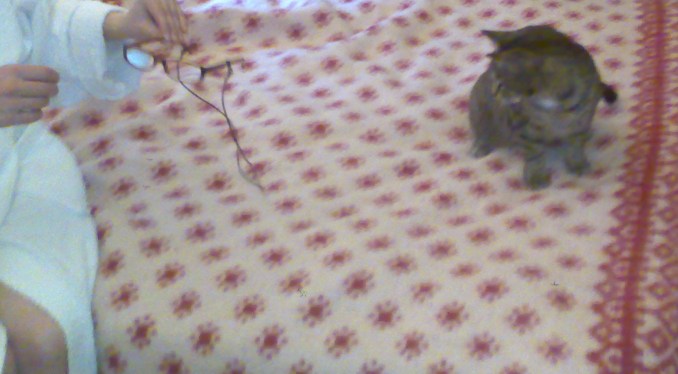
Server still running ?
Yep.
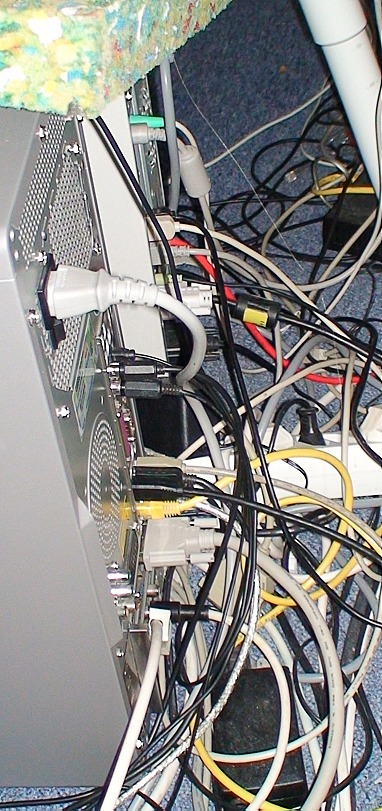
Back side of the server and the media machine I type this on (wireless)
while watching cable TV and a sat channel: from the top of my head:
cable, satellite wire, mains DVI to hdmi extender, 4.5 m smalll
to big firewire cable, TOS (digi audio) in and out (and a AES optical
link), Quality USB AD/DA converter, 100base-T (bleh) ethernet cable,
long usb to synthesizer midi usb, 5 meter usb extender to other synth
or memory usb connector.
In the server we have: Gig ether, mains, 4.5 m DVI extender, USB video
digitizer to cable and webcam (s-video), extender to small usb cable
for cameras (phone), 4.5 m firefire cable, keyboard, mouse, usb to
external 320mb Disc drive, sound output cable, tos sound output, mouse
charge usb extension cable, additonal external disc, serial cable.
Additional connections: fpga boards (parallel, serial, usb), dsp boards
(serial, midi)., additional (Lexicon) Usb convertor (needs to heat up
and isn't reliable at the moment), midi converter cable, additional
monitor (VGA) cable.
In fact I tried a 11.5 meter extension on it to a small room to watch
sat-tv without the noise and in another room, with a long DVI extender,
a double USB extender for the keyboard/mouse receiver and a long TOS
digital audio cable (for sound, connected to the Lexicon converter).
Works cool.
The media machine currently works on Fedora 12/64, running from a newly
installed TeraByte SATA disc from Western Digital, a nice "green
Caviar" type (mostly ext3/4 filesystems) which is already almost full
with my HD video recordings (over 22 hours at 25mb/s equals about 250
MB) programs, 24 bit (actually 32) audio, programs andrecorded sat/TV,
mainly High Definition (BBC HD / ITV HD). Some good films in HD, like
Jaws.
Server statistics for the last year:
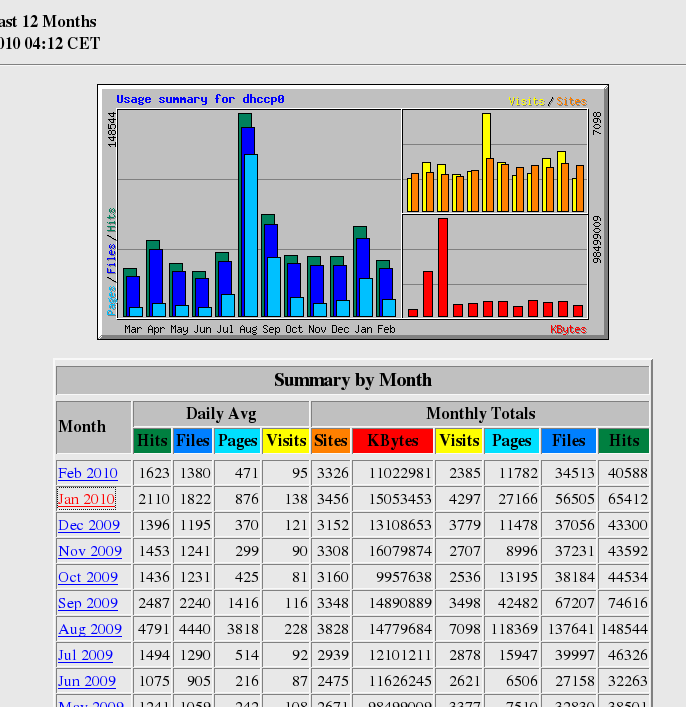
About 40 thousand hits per month, mostly, but the peak and probably
some other traffic was from wiki spam robots. I blocked most of those
fully from the system (they don't get any signal back anymore).
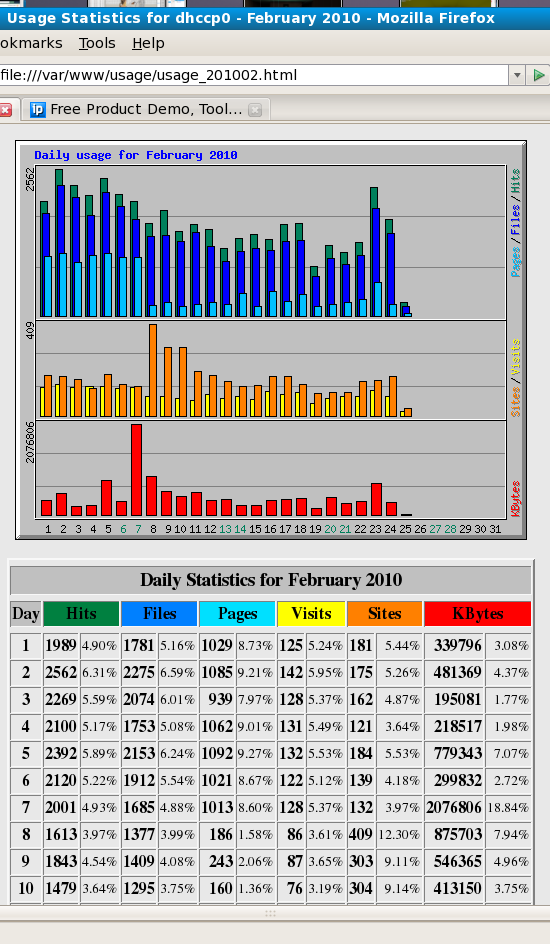
The above Linux page being put on the Linux Audio Wiki I think was
responsible for the increased traffic.
More PC3 sound developments
Some of my latest analog type of synthesizer emulation sounds:
synth9b.mp3
(Careful with the volume, but have party when playing it with a big
powerful system)
Microphone Recordings of Main Audio System played back on itself
That's a crazy experiment!?
Well, an example to hear for yourself (use a good audio system!):
Mike Stern Play # 4.mp3. Recorded
at a few meters from the speakers, no compensations, no eq or
filtering, straight AT2020 plugged in the Lexicon Omega phantom powered
mic preams, of which the insert output is linked to the Lexicon MX400
analog input, which digitized the result to a 24 bit TOS 44.1kC/s
signal which is straight converted to the mp3. No tuning, not even
measuring the distance between the mic and the speakers, ad hoc as-is
recorded.
This is my voice and a cup, with a little effect on the signal IIRC
(compression/reverb), see picture below:
me_irishc2.mp3
(beware, there is an attempt to make noises here, I didn't know I was
going to put the stirring example on the internet, burp is audible....)
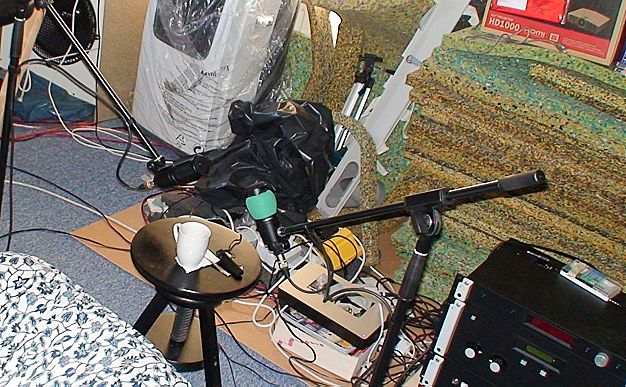
First I for the occasion madean Irish coffee (more or less, no whipped
cream) with like a tiny amount of wiskey, ad recorded my voice and
sound of stirring it from 2 diffewrent angles / distances.
Th two lexicons (the top one for excellent spec-ed pre-amps and the
lower (19" rack) for the excellent 24 bit AD converter (better than
most other equipment by quite a bit at least some yeasr ago):
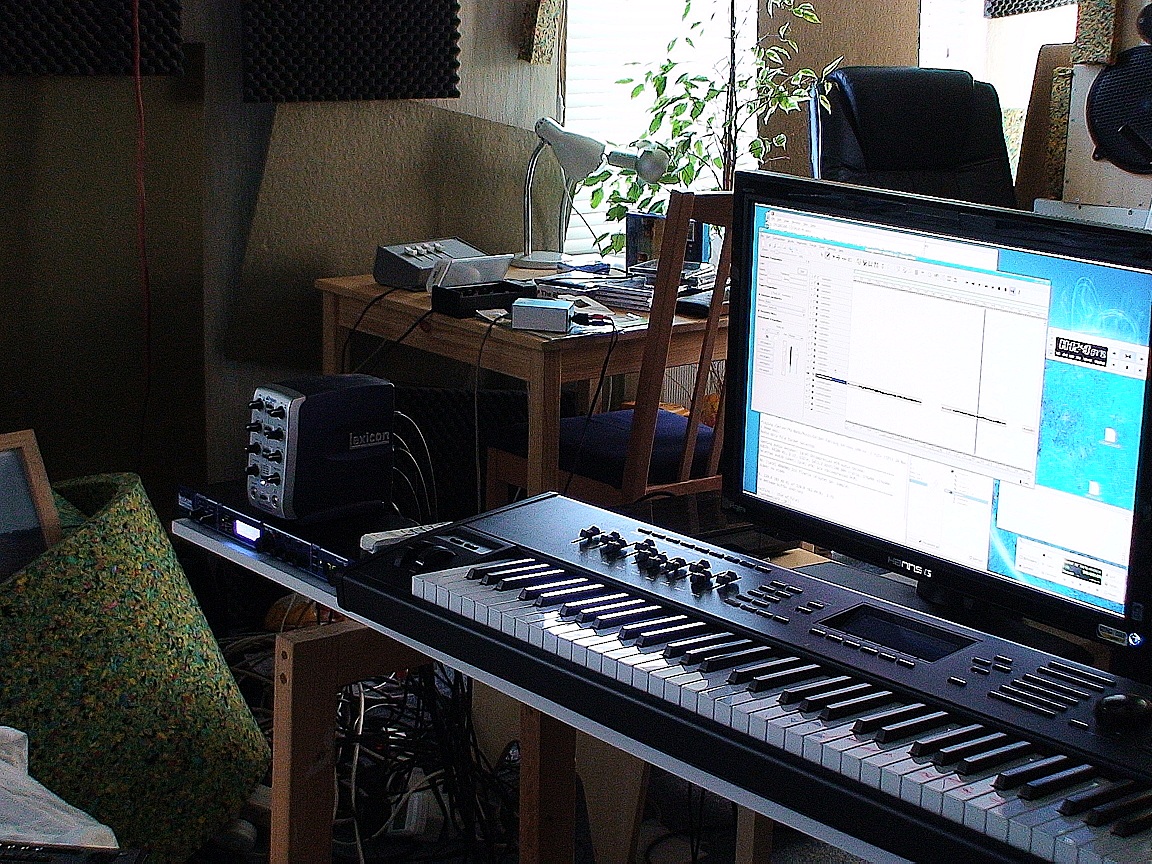
The screen shows Rosegarden on Fedora 10/64 (my Fedora 12 like on other
screen pictures has a problem with the TOS input and alsa, output works
though).
Playing around I was varying frequencies from over the spectrum (but
some trianglish wave with spikes it appears) recorded with the AT2020's
at a listening position, so way too far for correct measurements even
in a room with quite some damping (see the left/right interference
patterns make for quite different L/R responses, and the high is
damped), freqs aren't low to high but change abnd band switch (becasue
of the generator program, which I started rather at random):
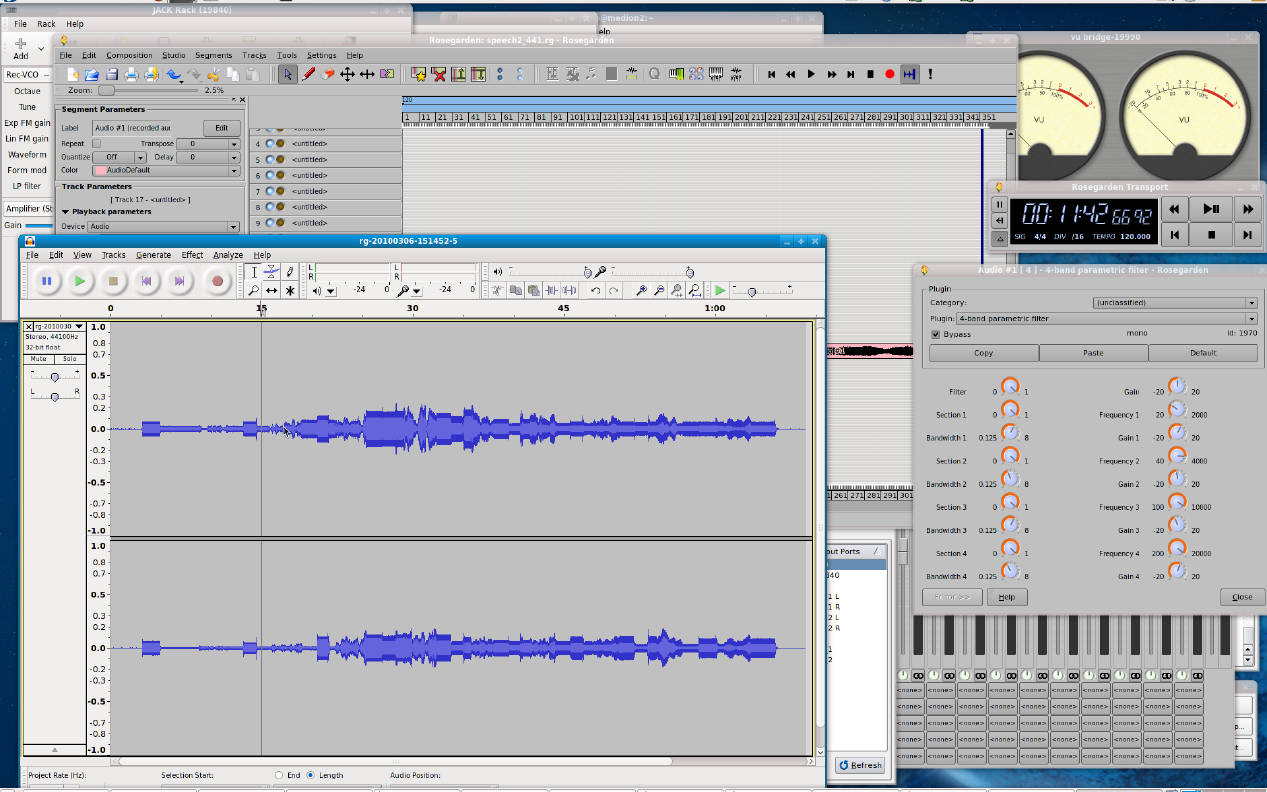
The 4 band eq is a quality one which I can use for compensating few dBs
here and there for the AT2020s characteristics (the graph of it's
response is in the manual).
I've made some Linux experiments available here
(the connection was the linux
audio conference).
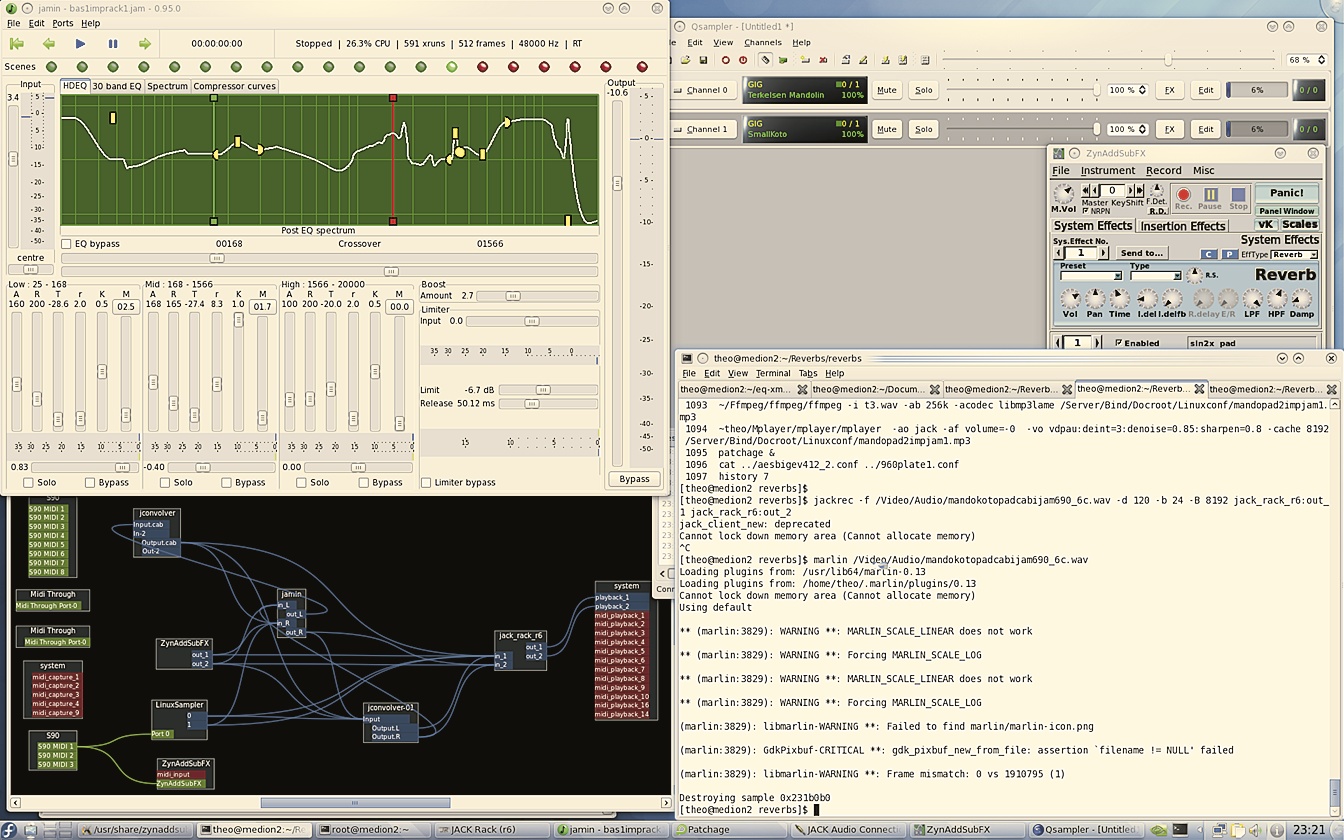
Example audio: mandokotopadcabijam690_6c.mp3
(about a minute, 256kbps mp3, stereo, 48k.)
This example takes an impulse revern of a space (concert hall) and one
of a cabinat (if I remember correctly) adds that effect to two
simulataneous instrument sample sets in LinuxSampler (Gigasampler) and
a synthesier simulation, with the special part added that a mastering
effect s used to like a PA system feed back the signal from the
reverberation to the point of a little less than feedback (like
micrphones), so that a "live" amplification feel comes in the signal.
Pretty heavy effect, and musically usable.
Mixing analog Master-HD (DTS) and 24 bit (Pcm) reverb signals
Xmms (winamp on Linux) 30 Band (1/3 oct.) Equalizer

Studio quality? Well sure for limited purposes, I might turn this into
a LADSPA or Jack plugin to use seperately, or even a Cuda based effect,
because these are well tuned Infine Impulse Response filter, in other
workds "normal" ones except of course the highest bands will have
sampling issues I'm pretty sure.
But I got some nice CDs legally (but very cheaply!) bought with a lot
of uncompressed and not destroyed-mastered great music, which can be
compensated for slight recording/mastering curves this way very
accurately, which is cool. Speakers and amps sound even better this way!
AES Lecture Tube amplifiers
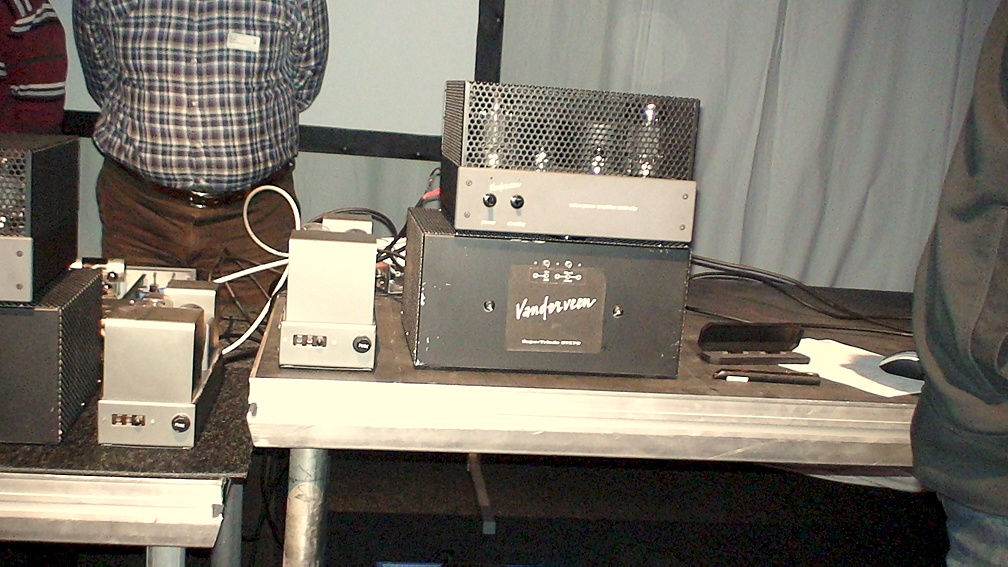
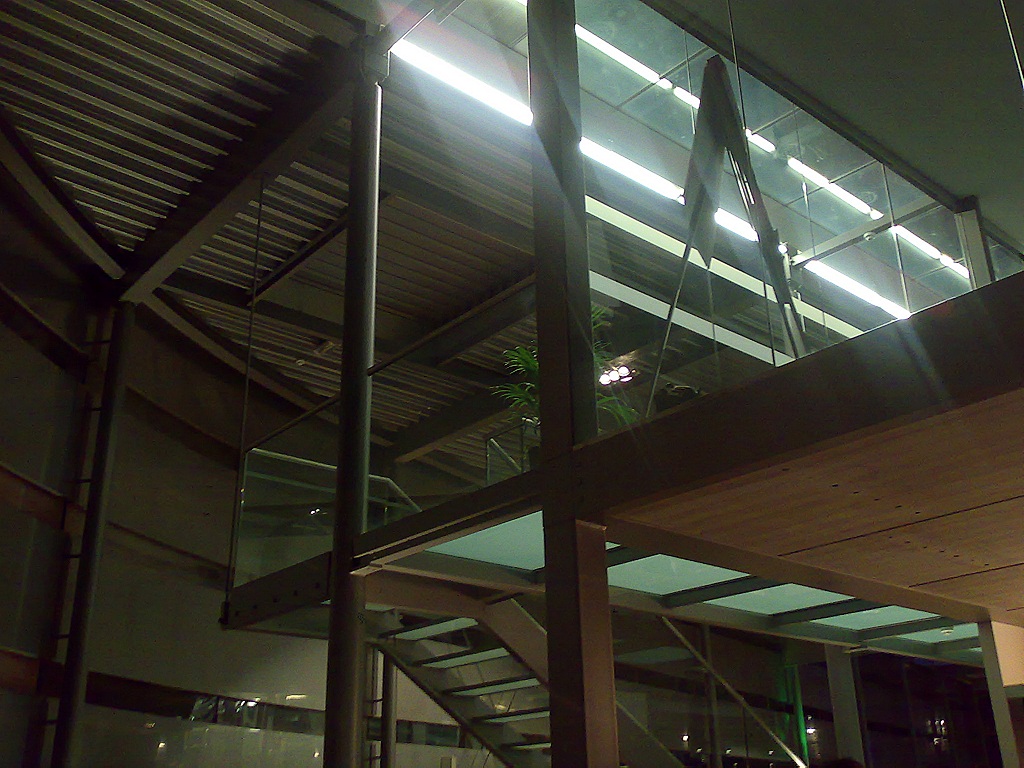
Radio Shack Catalogs!
1973:
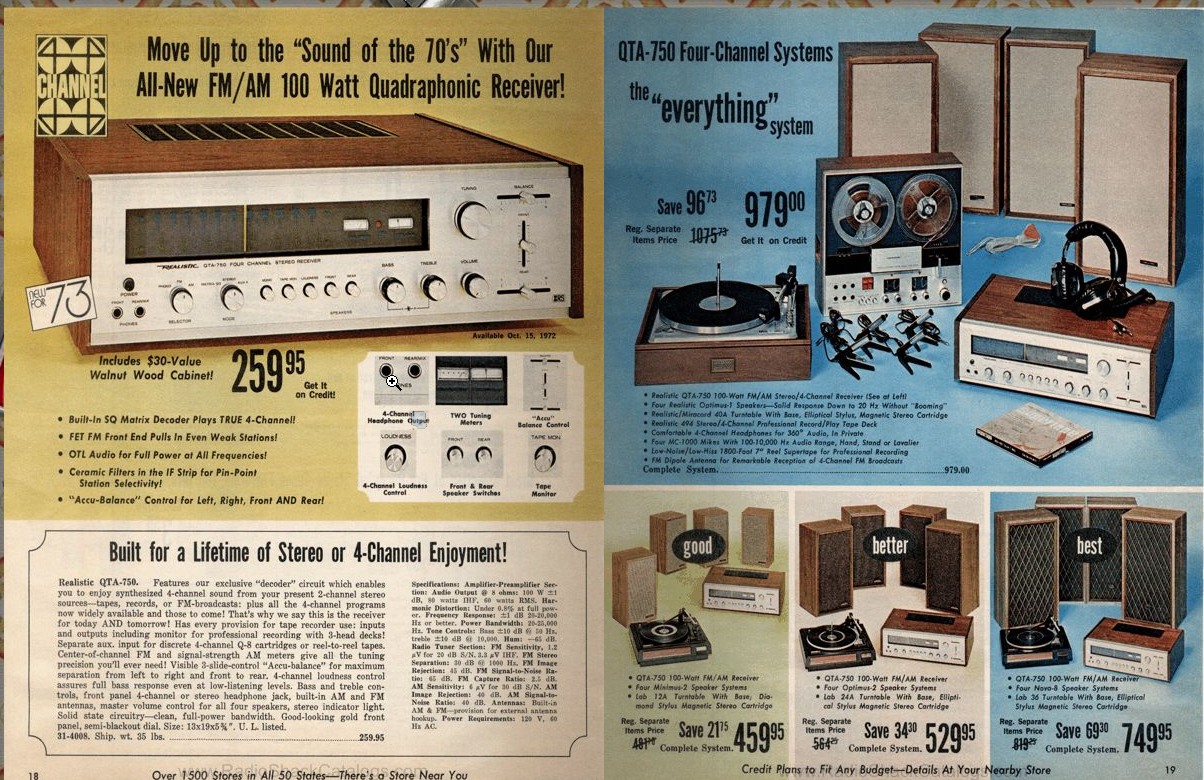
Quadro man, great! What a power. And 4 -tacks recordable on a tape
recorder in addition to that, for under a $1000,-, well well.
1970 (!):
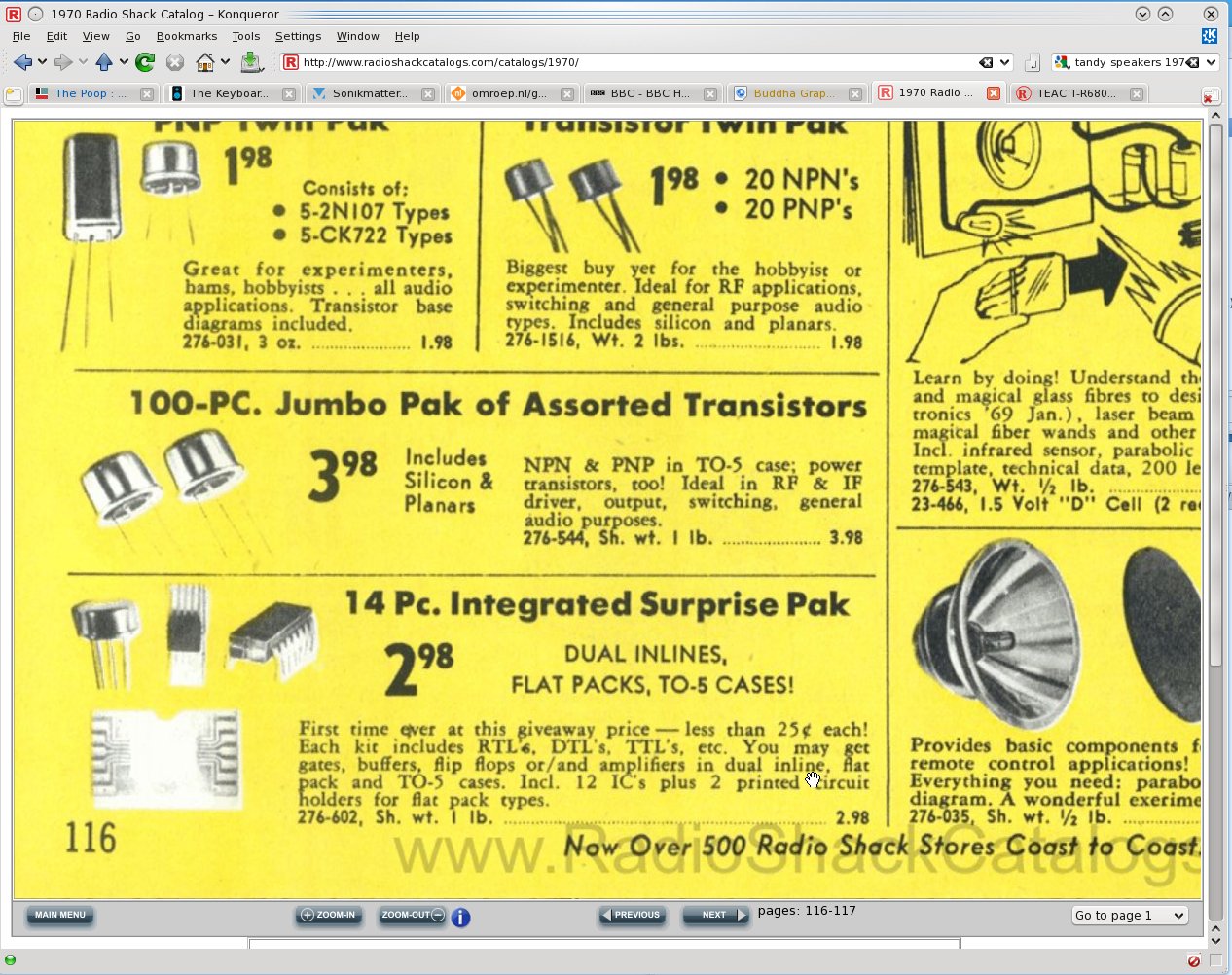
1973:
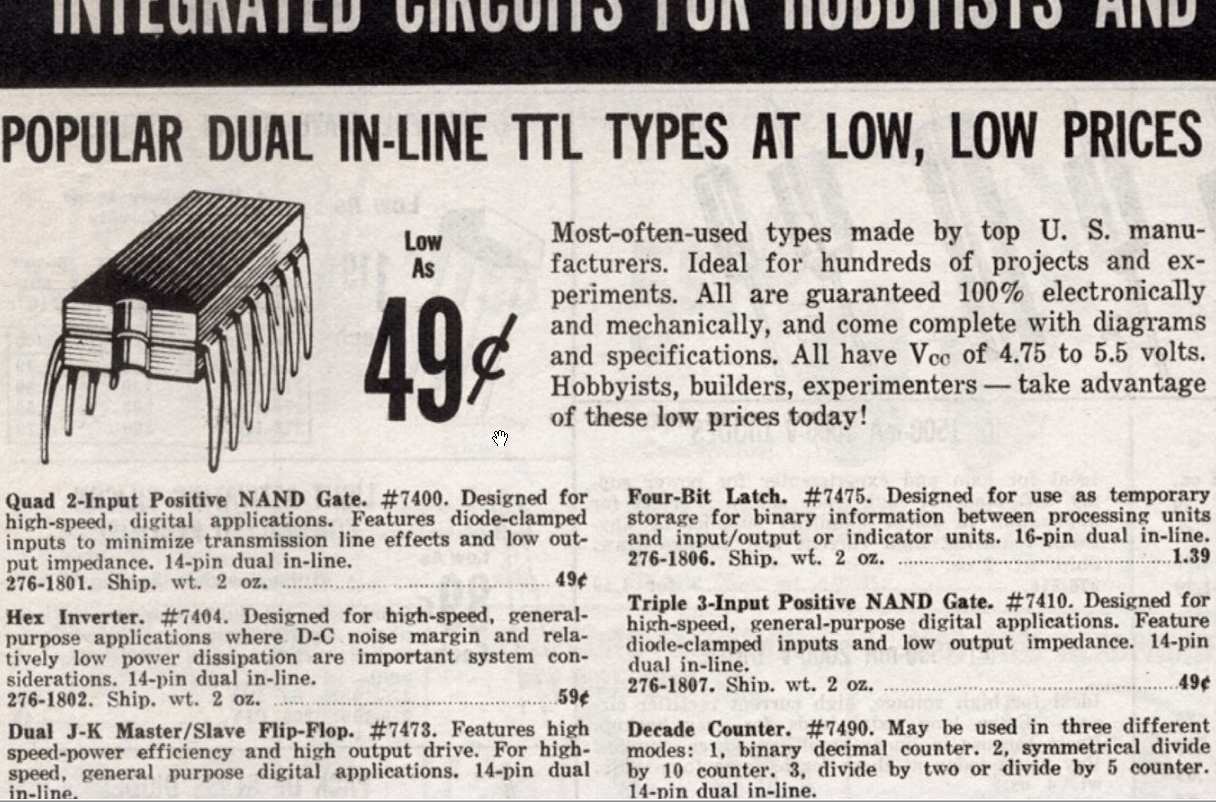
They had TTL chips normally available in the early 70s, that's cool.
















